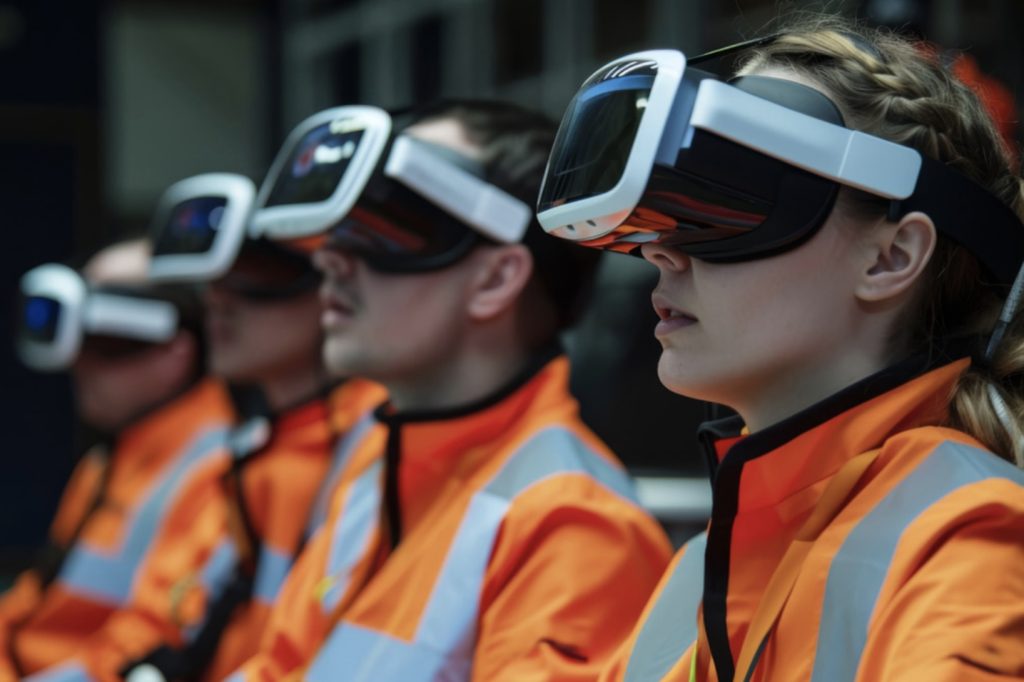Extended reality (XR), which encompasses virtual (VR), augmented (AR) and mixed (MR) reality, is radically transforming the professional training landscape. Immersive technologies provide unprecedented learning experiences, making sessions more interactive, engaging and effective. However, the large-scale deployment of XR devices poses significant challenges for organizations, particularly in terms of technical management, logistics, and financial and human investment. With a strategic approach and effective management, these challenges can be overcome to realize the many benefits VR offers in immersive and interactive training.
Needs assessment, configuration and maintenance of VR hardware
The first step to a successful deployment is assessing the organization’s specific hardware and software needs. This includes choosing the right VR headsets, powerful workstations and software needed for an optimal immersive experience. Specialist providers, such as Ino-VR and ArborXR, offer comprehensive solutions that cover the supply, configuration and maintenance of XR equipment.
Once the equipment has been acquired, the configuration phase is key. It must be carried out by qualified technicians who will configure each device with the required applications and settings. Ongoing maintenance is just as important to ensure the durability and optimal performance of equipment. Platforms like ArborXR offer fleet management services that centralize control of devices, simplifying software updates and troubleshooting technical issues.
The Benefits of XR Hardware Deployment Services
Scalability and flexibility
XR hardware deployment solutions are highly scalable, allowing businesses to train large numbers of employees simultaneously, without the geographic constraints of traditional classrooms. The flexibility offered by XR technologies also allows training content to be quickly adapted to changing industry needs.
Reduced costs and risks
Although the initial investment in XR equipment may seem high, it is quickly paid for by the reduction in costs associated with traditional training, such as travel, physical trainers and rental of premises. Additionally, XR training reduces the risks associated with learning dangerous tasks.
Once the equipment has been acquired, the configuration phase is key. It must be carried out by qualified technicians who will configure each device with the required applications and settings. Ongoing maintenance is just as important to ensure the durability and optimal performance of equipment. Platforms like ArborXR offer fleet management services that centralize control of devices, simplifying software updates and troubleshooting technical issues.
The benefit of deploying and managing XR headset fleets
For developers: a real-time laboratory
For developers, fleets of XR headsets distributed across businesses and training institutions provide a valuable testing ground for their applications. This proximity to the field can enable rapid and voluminous collection of data on usage, performance and user interaction with XR technologies. By leveraging this data, developers can improve usability, resolve specific issues, and continuously innovate. In addition, centralized headset management facilitates the deployment of updates and adjustments, thus ensuring constant improvement in the quality and efficiency of the applications offered.
Once the equipment has been acquired, the configuration phase is key. It must be carried out by qualified technicians who will configure each device with the required applications and settings. Ongoing maintenance is just as important to ensure the durability and optimal performance of equipment. Platforms like ArborXR offer fleet management services that centralize control of devices, simplifying software updates and troubleshooting technical issues.
For users: an improved and secure experience
On the user side, professional management of XR headset fleets guarantees a consistent and high-quality user experience. Users benefit from well-maintained headsets, up-to-date software, and responsive technical support, all essential for optimal immersion and interaction. Additionally, standardizing hardware and software across a fleet significantly reduces compatibility issues and downtime, which is crucial during high-stakes training or complex simulations.
A win-win partnership
XR headset fleet management creates an ecosystem where developers and users mutually benefit from continuous advancements and improvements. For developers, it’s about accelerating the development and innovation cycle through direct and constant feedback. For users, it is the assurance of reliable and cutting-edge technology adapted to their specific needs. Effective management of XR headset fleets makes it possible to fully exploit the potential of extended reality in the professional field, transforming training practices and paving the way for new learning and collaborative work methodologies.

